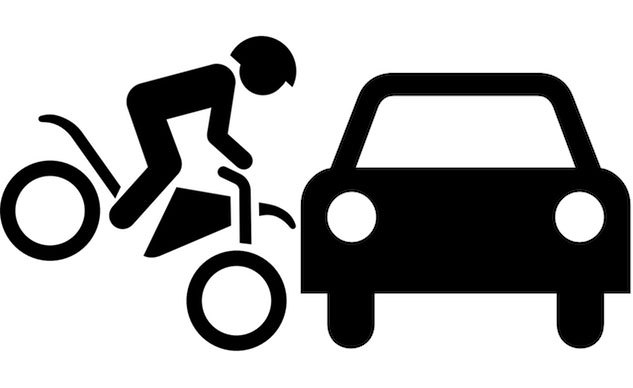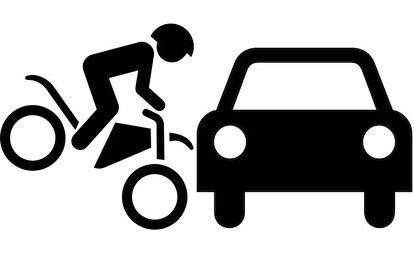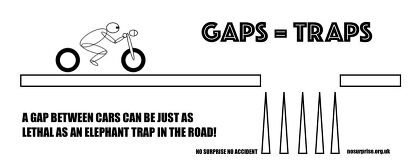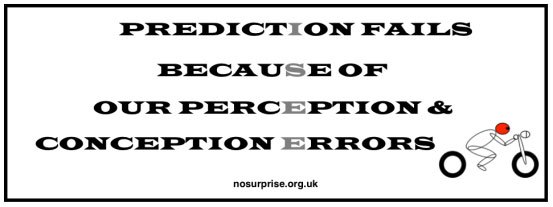No Surprise: No Accident
A different perspective of motorcycle crash causation
Motorcycle safety instructor, researcher and advocate Duncan MacKillop was the first presenter at the International Rider Training Symposium. MacKillop, Alf Gasparro, and Kevin Williams are the founders of No Surprise: No Accident – an initiative proposing that motorcycle crashes are largely a product of prediction failures.
Motorcyclist Deaths Surge 10% In 2015
A prediction failure is a discrepancy between incoming data and expectation. For example: a motorcyclist enters a corner with certain preconceptions. If the motorcyclist did not consider and prepare for the possibility of the corner containing gravel, an object or a decreasing radius – but one or more of these are present – the data will not match the expectation, thus a prediction failure has occurred. The result is a surprise that derails the motorcyclist’s training and ends with a crash or near miss.
“A rider must be able to determine what will happen next,” MacKillop said during the rider training symposium. “We’re traveling into the future. It’s prediction, prediction, prediction, prediction.”
Why does the scenario surprise even a trained motorcyclist? MacKillop’s analogy is this: Previous experiences playing catch result in purely instinctual actions, not an occurrence necessitating cognitive thought of the thrower, timing, speed and arc of the ball. However, if someone were to yell “catch,” and you turn to see a ball coming at you (even though you’ve exhibited the ability to catch the ball), the reptilian brain takes over and deflects the ball away or you duck.
For the motorcyclist, playing catch is a corner that holds no surprises. Conversely, unexpected gravel, an object or a corner with a decreasing radius is the surprise “catch!” resulting in the motorcyclist standing the bike up and going straight while applying brakes or perhaps crashing.
In other words, if a person were constantly considering the possibility of someone saying “catch,” they’d reduce the surprise factor and would most likely catch the ball. The same applies to the motorcyclist who is always predicting the possible outcomes of a corner, so when gravel, an object or decreasing radius arises, there is no surprise and they react accordingly to avoid crashing.
“We learn from being surprised,” MacKillop told us. He suggests counting the number of surprises you encounter on your rides, as each surprise is a learning opportunity.
What Mackillop and his associates are hoping for is to see motorcycle rider training move toward a more holistic approach where students are taught to understand and predict errors, in conjunction with skill-set instruction. An example of this is the what can go wrong, will go wrong (Cango?-Willgo!) scenario. For motorcyclists, this means predicting what other motorists could do (worst-case scenario), not on what they should do (best-case scenario).
At an intersection a rider should realize he or she is always at risk. Regardless if the motorcyclist has the right of way, if there is nothing physically blocking an automobile, there exists the possibility of the automobile running a red light or turning left in front of the motorcycle.
“A rider should be able to accurately predict the potential for another road user to move in a way that conflicts with the rider’s own choices. Put simply, Cango?-Willgo! involves determining if there is an opportunity for another road user to move into the space we already occupy or are intending to occupy, and thus avoid being surprised,” the website explains.
For experienced riders, much of this information may appear obvious, but according to MacKillop, experienced riders are exposed to long periods between between prediction failures. When this happens an experienced rider comes to trust their “anticipation skills.” The difference being, anticipating is passively guessing what’s around the corner with no reaction action, whereas prediction is proactively guessing what’s around the corner and devising a response.
Experienced riders are also cautioned to avoid fundamental attribution errors. “We tend to blame external forces for mistakes that befall us as riders,” MacKillop warns. He adds that riders who might not technically be judged as at fault in an accident still may have played a contributing role. “A brain is a prediction machine,” he says, advising its full use to keep us safe.
Technological Strategies To Motorcycle Safety
If you are interested in exploring this topic further, this is a very distilled version of a lot of information available at the No Surprise: No Accident website. There’s also a vast selection of recommended books, research papers, blogs, etc. You can also spend a few days reading the various posts on Duncan MacKillop’s blog where he delves into a variety of motorcycling safety topics.
A former Motorcycle.com staffer who has gone on to greener pastures, Tom Roderick still can't get the motorcycle bug out of his system. And honestly, we still miss having him around. Tom is now a regular freelance writer and tester for Motorcycle.com when his schedule allows, and his experience, riding ability, writing talent, and quick wit are still a joy to have – even if we don't get to experience it as much as we used to.
More by Tom Roderick



































Comments
Join the conversation
An old Boy Scout saying about always being prepared is the mindset I like to use. Keep an inner "what if?" rolling through your mind. Options will be be constantly considered. When a car does the wrong thing or gravel is mid-turn or a dog chases you, then you are prepared.
I am a convert to this thinking. I have been a motorcycle Instructor trainer for many years so was used to new ideas being thrown in, normally they fall apart under scrutiny, the British Advanced and Test training syllabuses can be traced back fifty years and the advanced theory is well established.
But this new thinking actually addressed many issues we had with the established ways. One example of this would be the "Sorry mate I did not see you" type of common recurring accident. Traditional "enforcement" takes the route that if a rider was not Drunk, stoned or speeding, then it's the drivers fault for not looking properly.
Kaizen, Safety II, "No Surprise" thinking instead looks at why car drivers fail to see approaching riders and gives us tools to deal with situations before they become a problem.
See: https://youtu.be/eqQBubilSX...
Or look at the collection of papers on the subject of "Vision" on the No Surprise / No Accident resources page: https://nosurprise.org.uk/r...